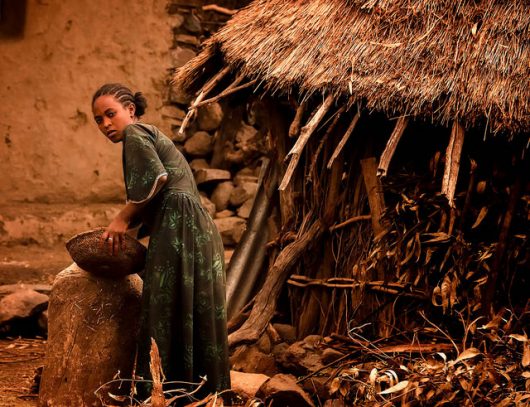Important Facts to Know About HPV in the Developing World

Human papillomaviruses (HPV) are DNA viruses that infect skin or mucosal cells. Depending on the severity of the infection, HPV can lead to either cervical cancer and other head and neck cancers or low-grade cervical tissue changes and genital warts. Virtually all cervical cancer cases result from a sexually transmitted infection with HPV.
Cervical Cancer and HPV in the Developing World
Globally, cervical cancer is known as the second most common cancer among women, with about 500,000 new cases being diagnosed annually. Of the total deaths that occur due to cervical cancer each year, more than 80 percent are concentrated in developing countries.
Immunization coupled with regular screenings and consistent treatments are the best strategies for reducing the burden of cervical cancer and HPV in the developing world. In resource-poor countries that lack adequate access to cancer screenings and treatment services, it is even more essential that younger girls be immunized before they are sexually active and are exposed to HPV.
The HPV Vaccine
The HPV vaccine protects against the strains that cause up to 90 percent of cervical cancer cases. It is typically available in most routine immunization programs of high-income countries. Historically, the major barriers to reducing the burden of cervical cancer and HPV in the developing world are due to the high costs of the HPV vaccines and the difficulty of reaching adolescent girls.
The GAVI Alliance–formally known as the Global Alliance for Vaccines and Immunization–is a partnership of national governments, the World Health Organization (WHO), the World Bank Group, the Bill and Melinda Gates Foundation, the vaccine industry and many public health institutions. GAVI provides technical and financial support for vaccines in countries that have a gross national income of less than $1,000 per capita and other poverty-stricken countries including China, India and Indonesia.
Thanks to the efforts of GAVI, the HPV vaccine is at a record low price and the poorest countries are able to access it for as little as $4.50 per dose. Additionally, the WHO decided to change the recommended dosage of the HPV vaccine from three to two doses, which helped facilitate the country rollout of the vaccine as well as significantly reducing costs.
The first HPV vaccine demonstration program took place in Kenya in 2013, and since then, 1,000,000 girls have been vaccinated. By the end of 2016, GAVI had initiated HPV vaccine demonstration programs in 23 countries, which is the first step toward introducing the vaccine to national immunization programs. So far, Honduras, Rwanda and Uganda have introduced the HPV vaccine into their national immunization programs.
Potential Roadblocks in the Push for the HPV Vaccine
Unfortunately, the transition from the demonstration programs to national introductions is taking longer than expected for some countries. Consequently, GAVI has developed a new approach to HPV vaccine support, which draws from the valuable lessons learned from previous demonstration programs.
Some of these lessons include:
- The fact that school-based delivery works very well when administering the vaccine to young girls. It is more cost effective to integrate HPV immunization efforts into routine immunizations at existing health clinics and schools.
- When promoting HPV vaccination programs and cervical cancer prevention, the facilitation of effective and factual communication within the community is particularly critical.
- GAVI has made tremendous progress in reducing the prevalence of HPV in the developing world through its vaccination initiatives. Eight GAVI-supported countries have integrated the HPV vaccine into their national vaccination programs and 30 countries have started a demonstration program.
However, despite the strong signs of interest from GAVI-eligible countries and the rapid and effective integration of the HPV vaccine, GAVI’s original goal of immunizing 40,000,000 girls by 2020 may be at risk due to supply constraints.
GAVI chief executive Dr. Seth Berkley stated, “Scaling up cervical cancer prevention and control strategies should not be delayed, as we have the tools to achieve this goal. With the right commitment from vaccine manufacturers as well as political support, strategic partnerships and investments, this particular battle to improve women’s health can be won.”
Thus far, GAVI has helped low-income countries access the HPV vaccine at affordable and sustainable prices. Dr. Berkley is confident that the organization is capable of meeting its goal. GAVI is dedicated to ensuring that its progress is maintained and that millions of girls in the poorest of countries are protected from the perils of HPV and cervical cancer.
– Lolontika Hoque
Photo: Flickr
